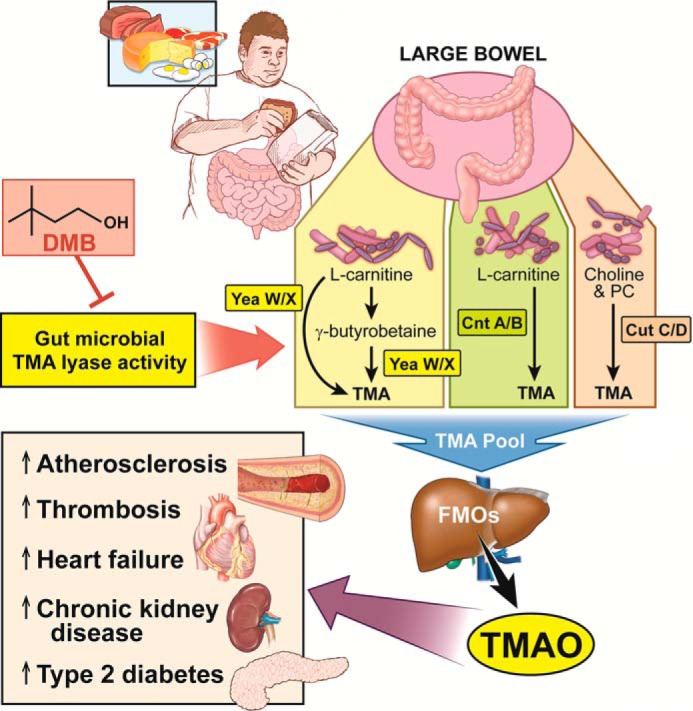Figure 2.

Drugging the gut microbial TMAO pathway for the treatment of prevention of cardiometabolic disease. Dietary consumption of choline, phosphatidylcholine (PC), carnitine, γ-butyrobetaine, and likely other methylamine-containing source nutrient gut microbes provides substrate for gut bacterial production of TMA through the collective actions of several TMA lyase enzymes. Bacteria expressing the YeaW/X enzyme complex can sequentially convert l-carnitine to γ-butyrobetaine and then γ-butyrobetaine to TMA. TMA can be generated from another l-carnitine TMA lyase enzyme complex known as CntA/B. Choline and phosphatidylcholine can be used by the CutC/D enzyme complex to generate a substantial pool of TMA. Once generated from these distinct sources, TMA enters the portal circulation where it is ultimately delivered to the host liver. The host flavin-containing monooxygenase (FMO) family of enzymes, especially FMO3, can then convert TMA to TMAO. TMAO can then promote atherosclerosis, thrombosis, heart failure, kidney disease, and insulin resistance via tissue- or cell type-specific reprogramming. Inhibition and choline and l-carnitine TMA lyase activity by DMB can blunt atherosclerosis progression in mice. The TMAO pathway represents one of the first pathways where small molecule inhibitors targeting microbial enzymes can benefit host disease.
